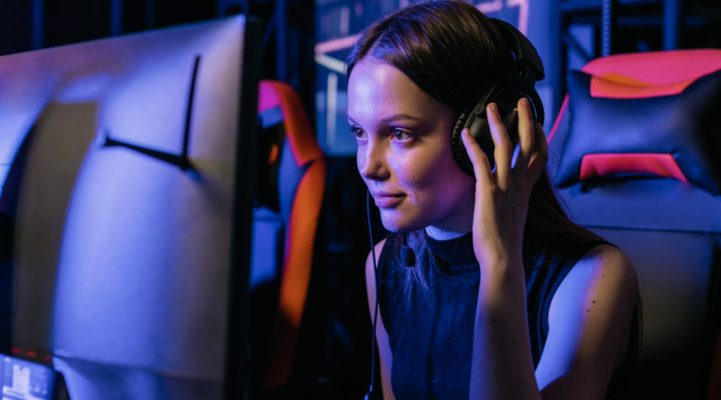
Table of Contents
The changing world of brand influencers
In the past: brands used professionals as their brand influencers. People like scientists, doctors, and engineers appeared in ads to give credibility to a brand.
But sometime in the past, those strategies stopped working because people saw too much of them and stopped trusting these paid professionals.
But aside from that, consumer decision-making started to shift. From being functional buyers who buy for the features and quality of products. To lifestyle and aspirational buyers who purchase to ascribe to a particular lifestyle portrayed by celebrities.
That shift paved the way for a new breed of brand influencers – celebrities.
After years of celebrities dominating every marketing channel, consumers started to lose their trust in these stars, especially since many people gained access to how much brands pay celebrity endorsers.
This gap created a need for newer brand influencers.
Due to the increasing popularity of social media platforms like Facebook, Instagram, and TikTok, plus the emergence of streaming sites like YouTube, Twitch, and Facebook Live, many people started creating their own content, replacing traditional celebrities.
Nowadays, there are millions of internet celebrities all over the world – from social media lifestyle influencers to gurus, and entertainers. All have followers ranging from a couple of thousand to tens of millions.
This massive reach and engagement encouraged brands to move their budget to micro-influencers. A 2019 study by Rakuten Marketing shows that brands spend 40% of their influencer budget on micro-influencers versus 28% on celebrity influencers.
The uprising of micro-influencers
Most micro-influencers create niche content based on their passions and interests. That’s why they can effectively reach people with the same interest. For instance, video game streamers like iamBrandon reach gamers who love to watch gaming content instead of TV.
And because micro-influencers have a relatively smaller following (less than 50,000), they can engage more with their tribe. They are ultimately building a stronger relationship with their fans.
As a brand, you’ll have your pick of influencers for your business. You can choose professionals like doctors, scientists, etc. You can also use traditional celebrities like movie stars and athletes. Or you can work with rising stars like fashion creators, lifestyle curators, internet athletes, or video game streamers.
Video game streamers as your brand’s influencers
Video games, gaming content, and live streaming have grown exponentially. Currently, there are 3.6 billion gamers worldwide (that’s close to half of the entire population!) There are also more than 7 million active live streamers across different streaming platforms like Twitch and Facebook Gaming. And in 2021 alone, 8.8 billion hours of video game live stream were watched worldwide.
This is why brands like PepsiCo, KFC, and Lexus have partnered with Twitch streamers to promote their brand to gamers!
How video game streamers can help your brand influence consumers
Video game streamers introduce your brand to more people
One of your most important marketing objectives will constantly be introducing your brand to more people and increasing your potential customers because it helps your business stay on track for consistent growth. Working with gaming brand influencers is one of the best ways to show your brand to more people.
Since there has been some drastic change in how and where people consume media, video game streamers can help you reach audience segments who abandoned television and other traditional media channels.
As of 2021, there are 1.2 billion video game content viewers worldwide. And as we mentioned above, the watch time reached an all-time high of 8.8 billion hours.
These numbers show that gaming channels are viable for communicating your marketing message to potential customers.
Don’t believe us?
Big brands like Uniqlo, Nike, and Adidas have partnered with gaming companies to create merchandise catering to the gaming audience. Moreover, brands like Pringles and KFC have gone above and beyond sponsorships by developing tailored gaming programs to reach gamers.
On a minor note, many big and small companies are also reaching out to gaming streamers and content creators as brand influencers to feature their products on their videos and social feeds.
Brand influencers build trust with potential customers
People buy from brands they trust. Without trust, your product/service will be one of a thousand choices that consumers will never choose, and you’ll play a losing game.
One time-tested way brands build trust is by affiliating themselves with credible spokespeople. As we mentioned, brands used to get professionals as brand influencers, then celebrities, and now they’re turning into internet influencers like video game streamers.
So why should you work with micro-influencers like video game streamers instead of celebrities?
In a study by Social Bakers, micro-influencers get 60% more engagement on their posts than celebrities and macro-influencers. This stat means more potential customers can see your brand by working with them.
But why?
Micro-influencers are usually regular people who share their passions with the world. Because of this, they’re more relatable to the common folk.
And since they have smaller audiences, they also tend to have a more engaged audience than celebrities because they can personally interact with their fans.
These factors build a stronger connection and trust between them and their fans, making them ideal spokespeople for your brand.
Video game streamers help you appeal to a younger audience
One of the ways to ensure a business’ profitability in the long term is by making themselves relevant to younger audiences because young people are poised to be their customers in the future.
Studies show that brand loyalty built at an early age tends to carry over to adulthood. Hence, if you can create a good relationship with a younger audience, you’re more likely to keep them loyal to your brand for a long time.
So how do video game streamers help you build this relationship?
Most video game streamers’ audiences are younger people between the ages of 16 to 34. This means many of these people already have the purchasing power to buy from your brand.
And if they don’t, they have considerable influence on their parents’ buying decisions for them. So even if you’re not influencing the primary decision-maker and buyer, you’re still influencing their influencers.
Finally, even if these customers cannot buy your products at the moment, they are on their way to having the financial capacity to buy since they’re working their way up the ladder.
This trend is why luxury brands like Louis Vuitton, Marc Jacobs, and Valentino are penetrating the gaming scene with in-game and physical merchandise.
In fact, when Louis Vuitton designed the trophy case for League of Legends’ 2019 Summoner’s Cup, they were able to put their brand in front of almost 100 million unique viewers. This trophy was eventually bagged by FPX – a Chinese League of Legends team.
And as we all know, China is one of the biggest luxury goods markets in the world.
Brand influencers drive your marketing message
Most video game streamers have a natural approach to creating their content. This style makes them more relatable to their audience. And since they don’t have many followers like celebrities, they can personally engage with their fans.
This situation gives them better engagement rates and trust scores than celebrities.
But what does this mean for your brand?
Since their audiences are more likely to hear them out completely (even their spiels on the brands they promote), you’re more likely to communicate your marketing message to potential customers.
By expressing your message clearly, potential customers will be able to understand what your brand brings to the table – making them more likely to consider buying from you.
Video game streamers bring in more sales
Combining all the factors we mentioned above, working with video game streamers can bring in more sales for your brand because they will introduce your brand to a broader audience, help you build trust for your brand, and help you relay your marketing message clearly.
But aside from driving traffic and sales for your brand, working with gaming influencers can be more cost-effective than working with macro-influencers since they’re more affordable and flexible with their rates.
Taking it to the next level
Working with gamers and streamers as your brand influencers can be your catalyst for growth. These personalities can help introduce your brand to a broader market, build trust and credibility, and generate conversions for your brand at a lower cost — making them valuable assets for your brand.
If you want to learn more about how to work with micro-influencers, you can download our ebook: The Power of Gaming Influencers: How They Can Help Grow Your Brand.
You can also check out our influencer marketing-related articles below:
- Level-up Your Marketing with User-Generated Content: 5 Exciting Benefits for Your Business
- Influencer Marketing: The Power-up Your Business Needs to Reach the Next Level
- Who Are Your Brand Influencers? 9 Must-have Influencers for Business Growth
- Find Influencers for Your Brand: 7 Secrets to Find the Best Brand Influencer


Find the best sponsorships for your stream
Get hired by the hottest brands all in one place. No cold emails necessary.